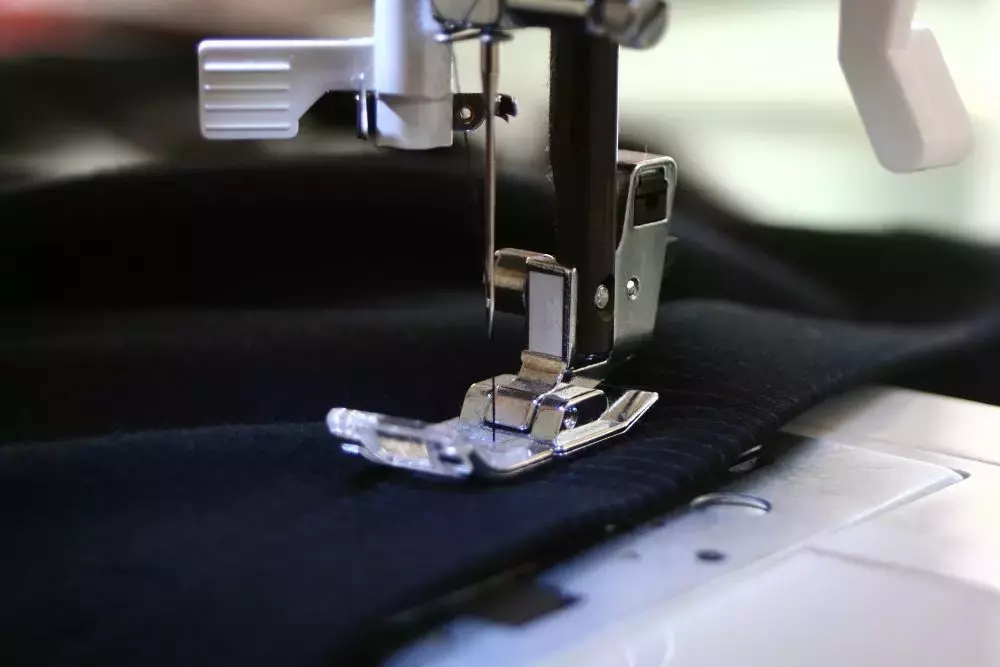Tips to Avoid Injuries While Sewing
2019-10-25
Is sewing dangerous? Sometimes. When you don't practice basic safety standards, it's easy to find yourself getting shocked, stuck, or snipped. Use these tips to stay safe while stitching away.
Unplug Your Machine When You Are Not Sewing
Sewing machines often lead to unexpected shocks. The power cord on machines can wear out over the years, and exposed wires make for very dangerous environments. Always unplug your cord to avoid shocks.
But, there's an even better reason to unplug your machine, and that’s to avoid stitching through your fingers. If you're changing a bobbin or untangling a knot, you could easily step down on your foot and shove your needle right through your finger. If you're not sewing, unplug your machine.
A solid tip for this is to use the power plug that your light switch connects to or use a power strip that has an off-on switch.
Practice Proper Needle Use
There are right and wrong ways to use a sewing machine, and all of the wrong ways have to do with the needle. Always use the right need for your project and for the fabric you're working with. Using the wrong needle often leads to needles snapping, and when that happens, needles fly across the room with extreme force. It's completely avoidable and can result in severe injury.
Another thing to consider is your tension. Too much tension can also snap your needle unexpectedly. If you have kids around, consider removing your needle when you're not using your machine. Even in the best-case scenario where your machine is not plugged in, kids can hurt themselves on a stationary needle.
Don’t Force a Foot
Forcing your foot to do something it's not meant for can lead to finger injuries. The most common situation is when someone is trying to sew over a wire, or too close to a zipper, and hits their fingers instead.
Always use the right foot for the job and use the foot from your sewing machine's brand — Brother feet for Brother machines and Singer feet for Singers.
Always Remove Your Pins Before Sewing
Pins pose many problems, and many people aren't comfortable removing them as they sew. Ultimately the best solution is to use sewing clips and get rid of your pins altogether. However, if you’re still stuck on pins, then consider taking a break, address your pins, and then working in cycles of pin removal and sewing.
Another solution for proper pin handling is to pin the traditional way. Lazy sewers pin vertically, so they run the chance of going straight into the machine. Traditionally, you pin perpendicular to the seam you're working on, so the pins are easy to remove, and if they do go through the machine, it's for one stitch, not the length of the pin.
Don’t Slump!
Poor posture leads to a variety of issues down the line. Don't slump in your chair. If anything, take a few measurements to ensure that you're ergonomically setup. Your forearms should lay flat on the table in front of you, and you should be able to comfortably feed your machine with your shoulders back.
Keep your room well lit and add a lumbar pillow behind you to remind yourself to sit properly.
Work at Comfortable Speeds – Don’t Rush
Sewing machines used to work at two speeds, home and industrial. Now, home machines work at near industrial speeds. If you’re a beginner, don’t rush through a project, because it’s unsafe.
Instead, take time and slow down.
The biggest concern with fast speeds is stitching through your finger... as in straight through it. Making a dash through a seam is no accomplishment if you ruin your finger and the whole project because you caught your hand in the machine.
Always Focus on Safety
Much like other hobbies, there are risks, and you should act carefully to protect yourself and your family. Having kids around sewing machines is nerve-wracking. You can put a few safety measures in place to ease your worry.
Don’t forget about your safety while you're sewing. Safely storing your machine, needles, or any other product you may be using from GoldStar Tool isn't enough. You need to always be aware of what you're doing while you're working on a project so you can remain safe.





